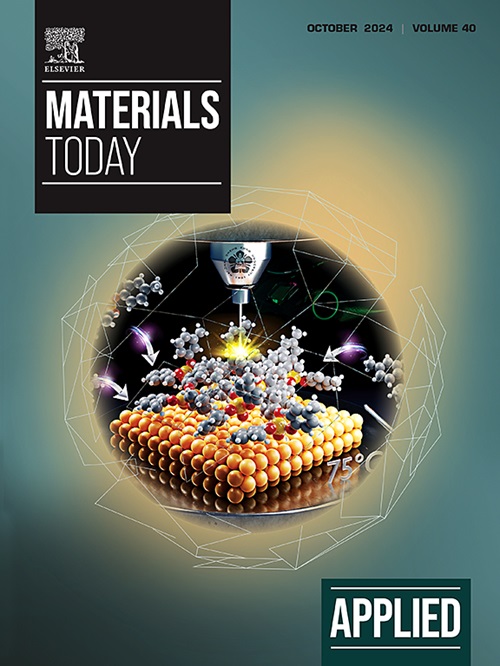用可生物降解的多巴胺纳米增敏剂对 NK-92MI 细胞进行光刻处理,这是生成工程化 NK 细胞疗法的一种可行策略
IF 6.9
2区 材料科学
Q1 MATERIALS SCIENCE, MULTIDISCIPLINARY
引用次数: 0
摘要
嵌合抗原受体(CAR)-T 细胞在采用免疫细胞疗法和治疗血液恶性肿瘤领域取得了重大进展。然而,这些疗法的生产和使用存在一些缺陷。因此,人们开始关注使用自然杀伤(NK)细胞来开发异体 CAR-NK 细胞疗法。虽然病毒转导对 T 细胞工程很有效,但 NK 细胞在这种方法中的疗效有限,而且毒性很高。因此,人们正在努力优化用于 NK 细胞工程的非病毒转染技术。其中一种新兴技术是光刻技术,它在转染不同的免疫细胞方面表现出高效率和多功能性。在这项研究中,我们评估了纳米粒子敏化光刻技术在 NK 细胞基因工程方面的潜力。我们的研究结果表明,FD500 和 eGFP mRNA 都能以高效、低毒的方式成功转染到 NK-92MI 细胞中。与最先进的电穿孔法相比,光穿孔被证明更高效、温和,并能保留 NK-92MI 细胞的表型。总之,我们的工作凸显了光刻技术在 NK 细胞工程中的广阔前景。本文章由计算机程序翻译,如有差异,请以英文原文为准。
Photoporation of NK-92MI cells with biodegradable polydopamine nanosensitizers as a promising strategy for the generation of engineered NK cell therapies
Chimeric antigen receptor (CAR)-T cells have made significant advancements in the field of adoptive immune cell therapies and the treatment of hematological malignancies. However, there are several drawbacks associated with the production and administration of these therapies. As a result, there has been interest in using natural killer (NK) cells to develop allogeneic CAR-NK cell therapies instead. While viral transduction is powerful for engineering T cells, NK cells have shown limited efficacy and high toxicity with this method. Therefore, efforts are being made to optimize non-viral transfection technologies for engineering NK cells. One such emerging technology is photoporation, which has demonstrated high efficiency and versatility for transfecting different immune cells. In this study, we evaluated the potential of nanoparticle-sensitized photoporation for genetic engineering of NK cells. Our findings show that both FD500 and eGFP mRNA can be successfully delivered into NK-92MI cells with high efficiency and low toxicity. When compared to state-of-the-art electroporation, photoporation proved to be more efficient, gentle, and capable of preserving the phenotype of NK-92MI cells. Overall, our work highlights the promising prospects of photoporation for NK cell engineering.
求助全文
通过发布文献求助,成功后即可免费获取论文全文。
去求助
来源期刊

Applied Materials Today
Materials Science-General Materials Science
CiteScore
14.90
自引率
3.60%
发文量
393
审稿时长
26 days
期刊介绍:
Journal Name: Applied Materials Today
Focus:
Multi-disciplinary, rapid-publication journal
Focused on cutting-edge applications of novel materials
Overview:
New materials discoveries have led to exciting fundamental breakthroughs.
Materials research is now moving towards the translation of these scientific properties and principles.
 求助内容:
求助内容: 应助结果提醒方式:
应助结果提醒方式:


